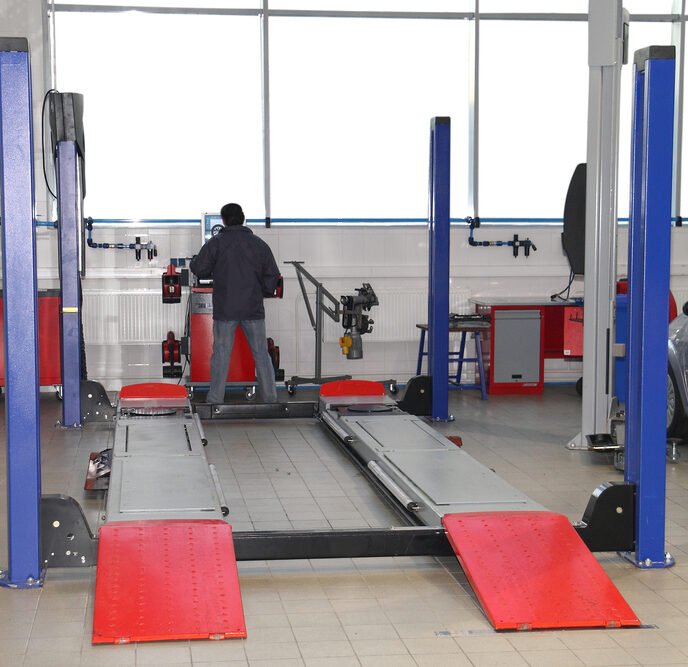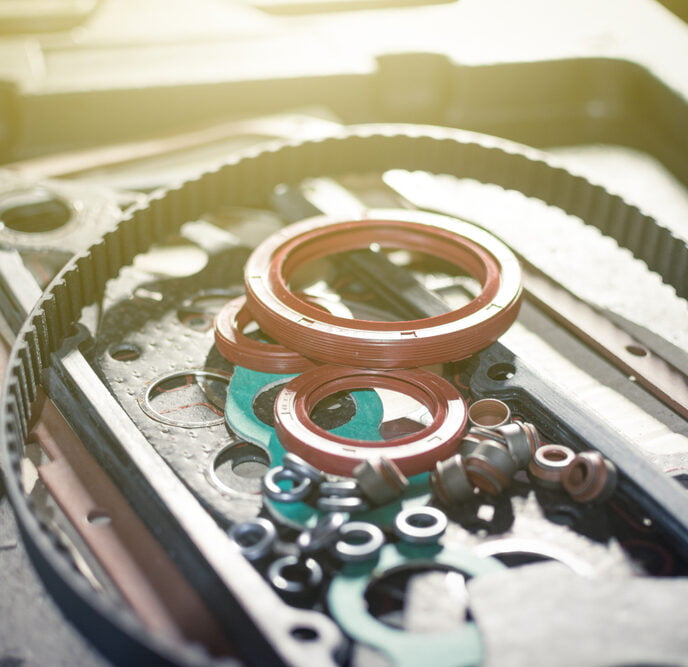Best Tire Changers for 2022

Tire changers can efficiently take the tire off the wheel assembly without damaging the rim or wheel. If you work in a shop, there’s no question how essential a tire changer is for efficient and safe work. However, with the variety of tire changers available today, buying a new one can be overwhelming.
When buying a new tire changer, there are a few things to consider, besides the types of changers available.
Things to Consider When Buying a Tire Changer
Space
It’s not only important to measure the dimensions of your area, but you also need to consider the tilt-back feature of some tire changers. So, before purchasing a new tire changer, see if you need to account for any additional space beyond the standard dimensions.
Available Power
Your available power source may not be your first thought when purchasing a new tire changer, but it will determine what options are available to you.
Some shops need a powerful tire changer but don’t have access to a 220 volt outlet. In addition, many heavy-duty tire chargers for large trucks or buses often require three-phase power, which isn’t available in most shops.
Size of Tires
Although many assume that a tire changer with a 30-inch diameter can service a 30-inch tire, it’s not the case. The tire size must be smaller than the maximum range of the tire changer.
It’s also a good idea to think ahead- if you plan on servicing larger vehicles at any point, it might be a good idea to purchase a tire changer with a more extensive maximum extendable range.
Needs of Your Shop
In addition to tire size, you must consider the types of tires or wheels you service. For example, if you ever service low-profile or run-flat tires, you’ll need to ensure that the tire changer can handle them. If you try to use a tire changer not designed for those tires, you can risk damaging the rims, costing you thousands of dollars.
If you are a high-volume mechanic, you will likely want a power-assisted mounting arm.
Lastly, upgrading to a newer model would be a good idea if your shop currently uses a center-post tire changer. Today’s cars typically have rims that require the tire changer to clamp onto them. In addition, clamps make the tire changer easier to use and reduce the risk of damage to alloy or aluminum rims.
Features and ease of use
Tire changers have become increasingly complicated with advanced features such as tilt-back towers, hydraulic drop-rollers, interchangeable duck heads, and swing arms.
If you want to save time, you’ll want to invest in a tire changer with a swing or assist arm. While it can increase the price of your tire changer, the time savings may be worth it. In addition, pneumatically-powered assist arms lock in place and securely hold the wheel assembly without damaging it.
Budget
While your budget is essential when considering what tire changer to purchase, it’s also vital that you get one that meets your needs. For example, getting a reasonably priced one might be tempting because it fits your budget, but does it fit your shop’s needs?
On the flip side, it’s not always wise to purchase the most expensive equipment because you assume it’s the best. The most expensive ones are usually made for high-performance vehicles with special wheels and tires.
Labor Costs
Another consideration is the high labor costs of today’s economy. Investing in a new tire changer allows your shop to have one technician changing tires, allowing other mechanics to take on additional duties.
Without a tire changer, many shops require two technicians for each tire job, causing labor costs to skyrocket over time.
Most Popular Types of Tire Changers
There are several types of tire changers, each with a different purpose to suit your needs.
Manual
A manual tire changer is ideal for small shops or garages because they are economical and budget-friendly. However, they require more physical assistance from your mechanics than other types.
Tilt Back
A tilt-back tire changer can angle back to fit large tires, which makes it a practical choice for shops that service large wheels. Not only does it service larger wheels, but because you don’t have to screw or unscrew the head or use attachments and bases, it’s a faster machine overall.
Compared to swing arm tire changers, it’s a bit more expensive.
Swing Arm
A swing arm tire changing machine is a good option for shops that consistently service the same size tires. Otherwise, the mechanic will have to adjust the clamps with every tire change. A swing arm tire changer has four adjustable tabletop jaws that provide safety and stability. For added protection to the wheels, the high-grip jaw delivers mounting torque.
Unlike the tilt-back changer, you must unscrew the swing arm’s head to fit different tires, increasing the labor time. However, many shops find the swing arm tire changers to be the most straightforward and efficient for the price range.
Leverless
Leverless tire changers, or touchless tire changers, are a fantastic solution for shops that service low-profile or run-flat tires. Leverless tire changers lift and set up heavy tire rims without needing manual help from technicians. As a result, this tire changer eliminates the need for your technicians to bend down each time.
Although leverless tire changers are more expensive than other types, they are frontrunners in tire-changing technology.
Heavy-duty
You will likely need a heavy-duty tire changer if you service construction, off-road, or agricultural vehicles. A heavy-duty machine can service wheels up to 56 inches in diameter and tires up to 90.5 inches with a width of 43 inches. If you need to service even larger tires, some heavy-duty models can handle tires up to 95 inches.
Heavy-duty machines use a four-jaw chuck to mount and dismount the wheel.
Motorcycle
Because motorcycles have smaller tires than a standard vehicle, it is unnecessary to purchase a typical tire changer to service them. Motorcycle tire changers have a bead loosening system and manual rim clamps and can service ATV and motorcycle tires.
Once you find the best tire changer for your shop, it’s vital to identify a trustworthy provider for automotive parts, as even the best-rated tire changer will need maintenance and repair during its lifetime.
SVI is North America’s largest repair parts and accessories provider for vehicle tire changers. You’re sure to find what you need with parts from over 30 manufacturers, including Coats, Ranger, Nussbaum, and Triumph. So, whether you’re looking for seals, tubing, fittings, blade covers, or plastic covers for your jaw clamps, we look forward to helping you find them.


